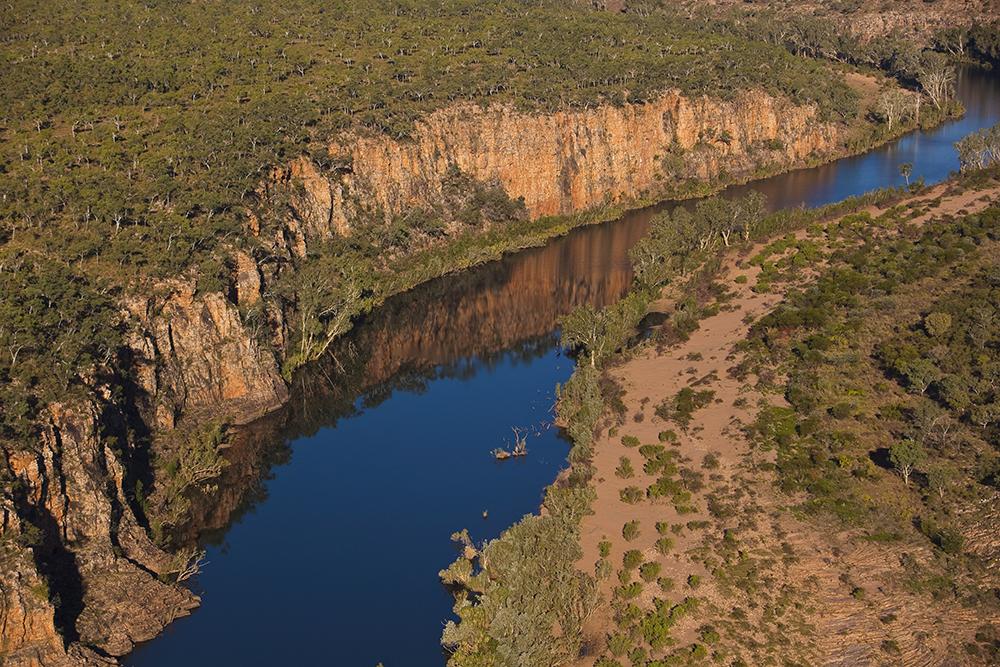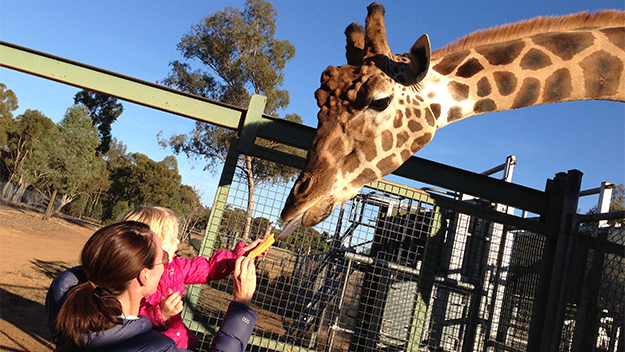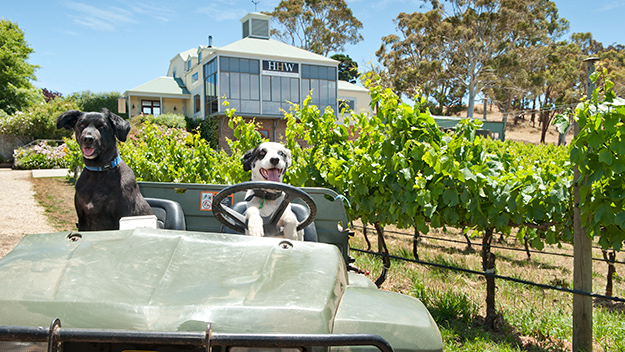Remote and less assesible by definition, wilderness destinations often look picture perfect in postcards. In reality, they can throw up challenges similar to TV’s Survivor series.
Every wilderness holiday will have its ups and downs. It’s a matter of getting the balance right and choosing a tour or a place tailored to your expectations and needs. At some destinations, the awe-inspiring landscape may come with extreme heat, humidity and dust, crawling critters, mozzies and sometimes a deficit of life’s little luxuries. Think carefully about the levels of discomfort you are willing to endure and weigh this up with the amount of money you’re prepared to pay. Home comforts in the outback often come with a high price tag. Take on too much and you’ll pine to be back home. Sanitise the whole experience and you may as well watch a travel show on TV. Get the balance right and it could turn out to be unforgettable.
“Wherever you intend to travel in Outback Australia make sure you allow the time to do everything that can be done to make the most of your truly unique holiday – don’t rush it — take the time to enjoy it fully,” advises Les Cox, Managing Director Aussie Adventure Holidays.
“One way of ensuring a great holiday and peace of mind is to join an small group escorted tour, such as the one based at Kakadu’s Hawk Dreaming, writes Mike Dolan, travel editor of The Australian Women’s Weekly.
It comes as no surprise to see a wedge-tailed eagle soaring above “Big Bill’s Place”. Its other name is, after all, Hawk Dreaming. Bordered by ancient outcrops of red sandstone and a network of lush green billabongs, this enclave is one of the Northern Territory’s best-kept secrets, a gem of a place that gives visitors an insider’s view of this World Heritage-listed national park.
Located on the traditional land of the late “Big Bill” Neidjie, Kakadu’s legendary Gagadju elder, Hawk Dreaming is the base of AAT Kings/Aussie Adventures small-scale tours. With only eight tents, a wash block and a lodge (with dining room and comfortable library/lounge), this is how Big Bill wanted it — small (a maximum of 16 guests), intimate and far from the crowds of “Kakadu central”. Close to Arnhemland, this safari-style camp couldn’t be better placed to visit Kakadu’s highlights. From here, the three-day guided tour takes guests to Barramundi Gorge in the south of the park, the Aboriginal art galleries at Ubirr Rock and the magnificent Jim Jim Falls, where, during the Dry, you can laze on beaches of fine white sand and swim in crystal clear lakes. Then there are the spectacular flood plains around Cannon Hill, a picnic on the leafy banks of the East Alligator River, a visit to a six-metre high cathedral termite mound and a cruise on Yellow Waters at Cooinda.
Just as you think the day is over, there’s the sunset stroll back at Hawk Dreaming, where, on the right day, the waters of the billabong turn gold and crimson as the resident four-metre croc glides by on his last patrol of the day. All in all, this is one of the Top End’s top treats. Affordable at $999 per adult ($799 per child) for three days (all meals included), it operates during the Dry (May-October, departing Darwin on Mondays, Wednesdays and Fridays). The camp is comfortable and beautifully located, the meals freshly prepared and hearty. Yet most of all, the guests love the camp’s peace and seclusion, just as Big Bill would have wanted.
Visit: www.aussieadventures.com.au
Alternatively, you may wish to visit Kata Tjuta (formerly the Olgas), the twin sister of Uluru, another extraordinary destination, says Mike Dolan.
In a country with a landscape of awe-inspiring rocks, the domes of Kata Tjuta are right up there with the best on offer. Incredibly, though, many first-time visitors to this part of Australia’s Red Centre, 400 kilometres south-west of Alice Springs, are unaware of Kata Tjuta’s lofty status in the pecking order of Australia’s rock formations.
Formerly named the Olgas (after a 19th-century European queen), this magical range in the Northern Territory would be the No. 1 attraction if it was just about anywhere else, but thanks to its proximity to the most famous monolith of all, Uluru (Ayers Rock), around 50km east, it’s often not given the time it deserves. That’s despite the fact that it has 36 distinctive domes (Kata Tjuta means “many heads” in the local Aboriginal language) and Mt Olga, at 546 metres, is nearly 200 metres higher than Uluru.
Over the years, a few things have changed: the bone-shaking red dirt access road has been replaced with smooth bitumen and a boardwalk prevents people tramping over the vegetation as they take in the view from the dunes. What hasn’t changed is the opportunity to immerse yourself in Kata Tjuta’s haunting landscape by either watching its domes turn blood-red at sunset or walking through the Valley of the Winds at dawn. Strolling through Walpa Gorge in the late afternoon is another highlight.
Experience all three and you’ll find out why Kata Tjuta is so special. One of the best ways to see Kata Tjuta is to set off when the stars are still bright in the sky, as this gives you time to drive the 35km from Yulara, the village that services the national park, to the dune viewing area before the sun rises. Set on a ridge, at the end of a 300-metre boardwalk, the lookout provides a superb panorama of the range rising above the red dunes and the desert plain, dotted with desert oaks, low shrubs and wild flowers. As the first rays hit the highest domes and skim across the dunes, the colours intensify and the landscape glows.
Then, not long after sunrise, drive to the Valley of the Winds, the 7.4km walking loop that takes around three hours and is rated by many as the best walk in the park. On offer is a rugged Central Australian landscape in which the mighty domes and deep gorges dwarf mature silver-barked gums. Starting early is essential as it gets very hot, very quickly. Not only is the sun merciless, but it also turns the domes into great radiators.
Those with two mornings may like to start the Valley of the Winds walk before dawn. Once in the entrance gorge, you’ll see the black silhouettes of the domes etched by blazing stars and then feel the arrival of the softest caress of wind as the sky above turns cerulean with a hint of pink.
Either way, after the early start, it’s back to Yulara for food, rest and escape from the midday sun, before setting off mid-afternoon to Walpa Gorge, where you can get up close to the walls of the domes.
Sheltered between the sheer rock faces of Mt Olga and Mt Walpa is an easy 45-minute stroll to the narrow head of this gorge. This is where Kata Tjuta really imposes itself, as the dome walls tower above you. The gorge is best seen in the afternoon as sun floods in through the westerly opening.
As the shadows start to slide down the walls of the gorge, make your way out and over to the nearby sunset viewing area. From there, the classic “postcard” view is right before you. As the sun sinks towards the horizon, just like at Uluru, the domes go through a series of colour changes, climaxing on the best of days in a blood-red glow.
Darkness descends while I’m driving back to Yulara, but there is one last view to be enjoyed. From the main road, about 50km from the sunset viewing area, the domes of Kata Tjuta can be seen silhouetted against the fading dusk sky. Although only specks on the horizon, their form is as distinctive as ever.
See some of Australia’s inspiring landscapes on an adventure of a lifetime on an AAT Kings tour. Choose from a wide selection of escorted tours that includes Northern Territory Small Group Adventures at www.aatkings.com.au or visit your travel agent.


